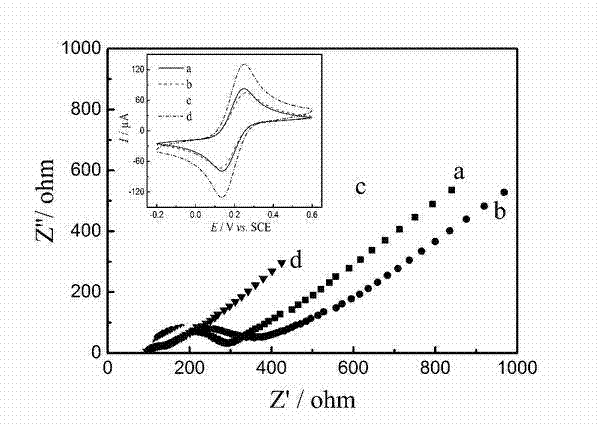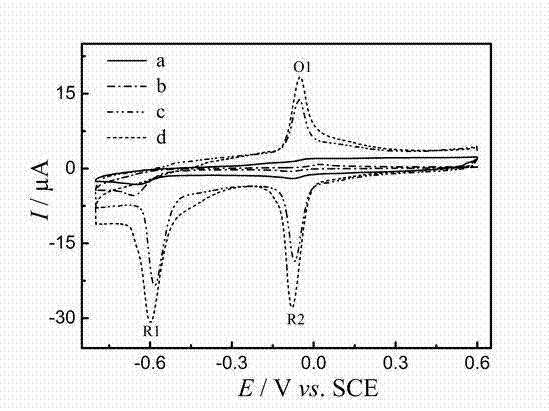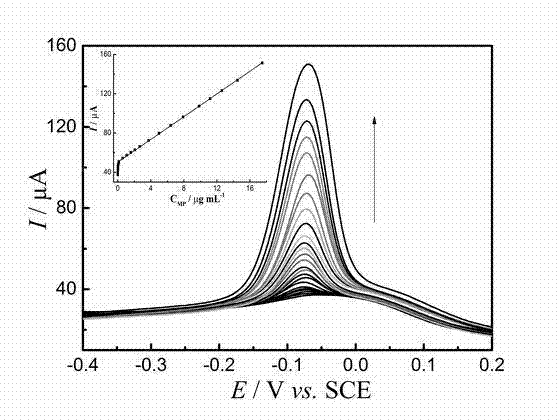Preparation method of electrochemical sensor for detecting organophosphorus pesticide methyl parathion
A technology of methyl parathion and organophosphorus pesticides, applied in the direction of material electrochemical variables, etc., can solve the problems of unstable life of enzyme sensors, enzyme variability, etc., and achieve low preparation cost, good stability, and strong selectivity Effect
- Summary
- Abstract
- Description
- Claims
- Application Information
AI Technical Summary
Problems solved by technology
Method used
Image
Examples
Embodiment Construction
[0010] A method for preparing an electrochemical sensor for detecting the organophosphorus pesticide methyl parathion, comprising the following steps:
[0011] 1. Preparation of a mixture of single-walled carbon nanotubes (?-SWCNT) and β-cyclodextrin (β-CD): Dilute 1.0 wt% ?-SWCN with secondary water and sonicate for 1 hour to obtain 0.1 wt% ?-SWCN dispersion, doped β-CD into 0.1 wt% ?-SWCN dispersion so that the concentration of β-CD was 10 mg mL -1 , ultrasonically mixed to obtain ?-SWCNT–β-CD mixture.
[0012] Electrochemical determination of methyl parathion: different concentrations of methyl parathion were added to phosphate buffer at pH 6.0, and methyl parathion was subjected to differential pulse voltammetry using a ?-SWCNT–β-CD composite electrode Determination. The results show that the composite electrode has a good linear relationship to methyl parathion, remarkable sensitivity and low detection limit.
[0013] Performance evaluation of the ?-SWCNT–β-CD composit...
PUM
 Login to View More
Login to View More Abstract
Description
Claims
Application Information
 Login to View More
Login to View More - R&D Engineer
- R&D Manager
- IP Professional
- Industry Leading Data Capabilities
- Powerful AI technology
- Patent DNA Extraction
Browse by: Latest US Patents, China's latest patents, Technical Efficacy Thesaurus, Application Domain, Technology Topic, Popular Technical Reports.
© 2024 PatSnap. All rights reserved.Legal|Privacy policy|Modern Slavery Act Transparency Statement|Sitemap|About US| Contact US: help@patsnap.com










